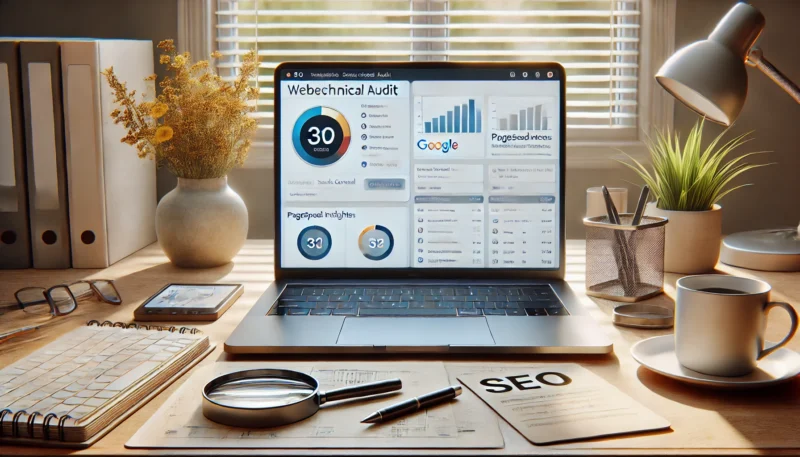If you’ve been focusing on keywords, backlinks, and content quality — great! But there’s another side of SEO that’s just as important and often overlooked: technical SEO.
Think of technical SEO as the foundation of your website’s SEO health. It ensures that search engines can crawl, index, and understand your content properly — and that users have a smooth experience.
In this beginner-friendly guide, you’ll learn what technical SEO is, why it matters, and how to start optimizing your website step-by-step.
What Is Technical SEO?
Technical SEO refers to the optimization of your website’s backend structure and systems to help search engines access, crawl, interpret, and index your pages efficiently.
While content and links drive visibility, technical SEO ensures your site is ready to be found and ranked.
Why Is Technical SEO Important?
Even the best content won’t rank if:
-
Your site loads too slowly
-
Search engines can’t crawl or index your pages
-
Your mobile experience is poor
-
Duplicate content confuses bots
Technical SEO helps prevent these issues and improves your Core Web Vitals, site architecture, and crawlability — all critical for search rankings in 2025.
Key Elements of Technical SEO (Explained Simply)
1. Website Speed and Performance
Google uses page speed as a ranking factor, especially on mobile. If your site is slow, visitors will bounce — and rankings will suffer.
Tips:
-
Compress images (use WebP or TinyPNG)
-
Use a fast, reliable hosting provider
-
Minimize CSS and JavaScript files
-
Enable browser caching and lazy loading
-
Use a CDN (Content Delivery Network)
2. Mobile-Friendliness
With mobile-first indexing, Google prioritizes the mobile version of your website. Your site must:
-
Be responsive on all devices
-
Have readable text and accessible buttons
-
Avoid intrusive popups
-
Pass Google’s Mobile-Friendly Test
3. Secure and Accessible Website (HTTPS)
Security matters. Google favors websites that use HTTPS over HTTP.
-
Install an SSL certificate
-
Redirect HTTP to HTTPS
-
Ensure all internal links point to the HTTPS version
4. XML Sitemap
An XML sitemap tells search engines which pages on your site should be crawled and indexed.
-
Submit your sitemap in Google Search Console
-
Update it regularly as you add or remove pages
-
Make sure it includes only index-worthy pages
5. Robots.txt File
This file tells search engines which parts of your site to crawl or ignore.
Common uses:
-
Preventing duplicate content (e.g., tag or category pages)
-
Blocking access to admin or backend areas
Be careful: a mistake in robots.txt can block your whole site from being indexed.
6. Crawlability and Indexability
Search engines need to access and understand your pages.
Check for issues like:
-
Broken links (404 errors)
-
Redirect chains or loops
-
Pages marked “noindex” that shouldn’t be
-
Pages unintentionally blocked by robots.txt
Use tools like Google Search Console, Ahrefs, or Screaming Frog to diagnose problems.
7. Structured Data (Schema Markup)
Structured data helps search engines understand the context of your content — and can enhance how your pages appear in results (rich snippets).
Types of schema:
-
Articles
-
Reviews
-
FAQs
-
Events
-
Products
Use tools like Schema.org, Rank Math, or Yoast SEO to implement schema markup.
8. Canonical Tags
If you have similar or duplicate content, canonical tags tell search engines which version is the “official” one to index.
Example: If your blog post is accessible at both:
-
yourdomain.com/blog/post-title -
yourdomain.com/post-title
Use a canonical tag to point to the preferred URL and avoid duplicate content penalties.
9. Core Web Vitals
Google’s Core Web Vitals are user experience signals that now influence rankings:
-
LCP (Largest Contentful Paint): How quickly the main content loads
-
FID (First Input Delay): How fast your site reacts to a user’s interaction
-
CLS (Cumulative Layout Shift): Visual stability of the page during load
Test your site using Google PageSpeed Insights and fix the issues it flags.
10. Clean Site Architecture
A clean, logical structure helps both users and bots navigate your site.
Best practices:
-
Use a clear navigation menu
-
Keep important content within 3 clicks from the homepage
-
Use breadcrumb navigation
-
Avoid orphan pages (pages with no internal links)
Tools to Help You with Technical SEO
-
Google Search Console – Identify indexing and crawling issues
-
PageSpeed Insights – Analyze speed and performance
-
Screaming Frog SEO Spider – Audit your entire website structure
-
Ahrefs / SEMrush – Site audits and error tracking
-
Yoast SEO / Rank Math – Technical SEO for WordPress
Final Thoughts: Get the Foundation Right
Think of technical SEO as the infrastructure of your website. Without it, your SEO efforts may not reach their full potential — no matter how good your content is.
Start with the basics: speed, mobile-friendliness, and crawlability. Then build from there. With consistent effort and the right tools, your site will be easier to index, faster to load, and more visible to your audience.

